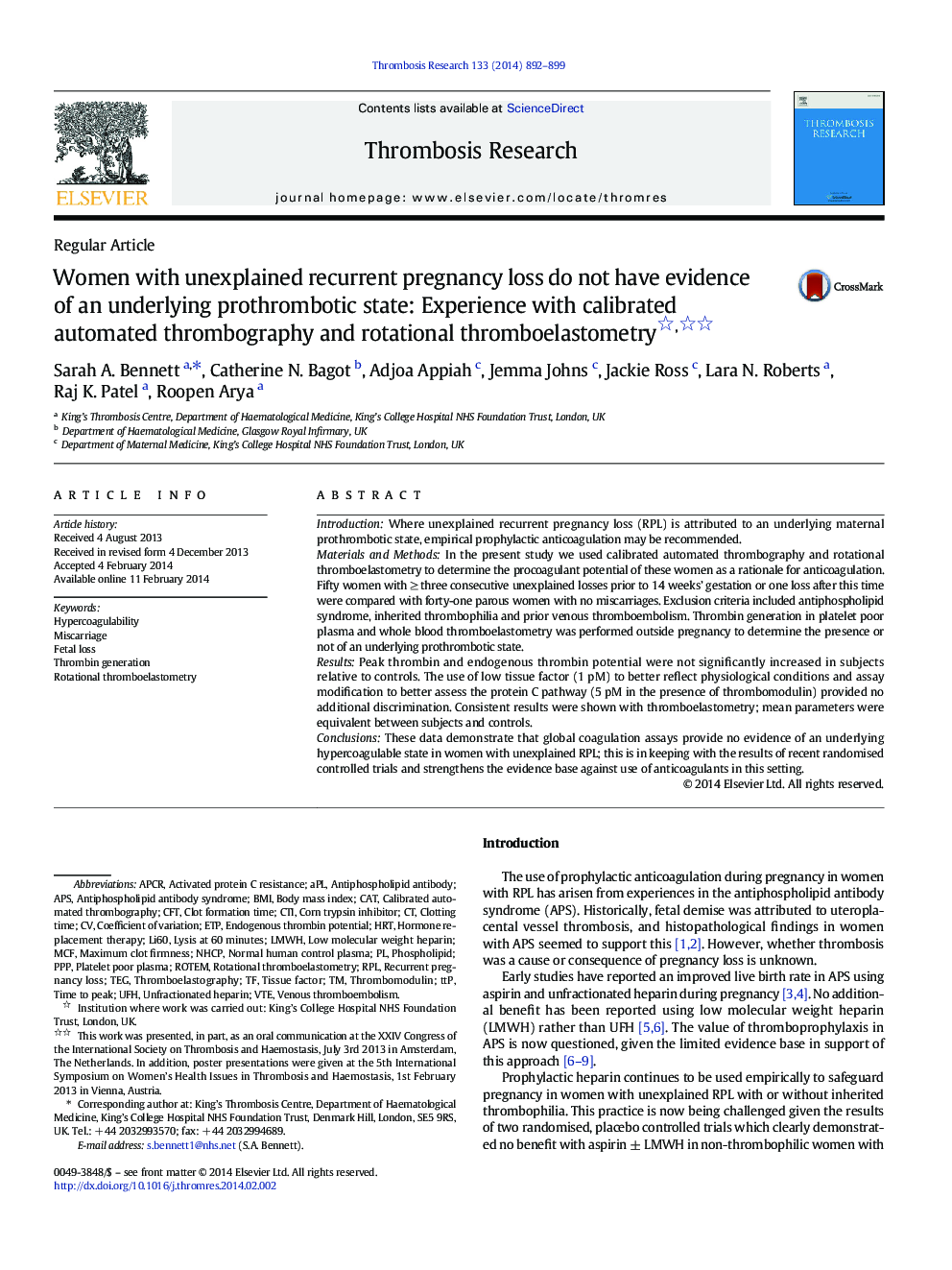| Article ID | Journal | Published Year | Pages | File Type |
|---|---|---|---|---|
| 6001247 | Thrombosis Research | 2014 | 8 Pages |
IntroductionWhere unexplained recurrent pregnancy loss (RPL) is attributed to an underlying maternal prothrombotic state, empirical prophylactic anticoagulation may be recommended.Materials and MethodsIn the present study we used calibrated automated thrombography and rotational thromboelastometry to determine the procoagulant potential of these women as a rationale for anticoagulation. Fifty women with â¥Â three consecutive unexplained losses prior to 14 weeks' gestation or one loss after this time were compared with forty-one parous women with no miscarriages. Exclusion criteria included antiphospholipid syndrome, inherited thrombophilia and prior venous thromboembolism. Thrombin generation in platelet poor plasma and whole blood thromboelastometry was performed outside pregnancy to determine the presence or not of an underlying prothrombotic state.ResultsPeak thrombin and endogenous thrombin potential were not significantly increased in subjects relative to controls. The use of low tissue factor (1 pM) to better reflect physiological conditions and assay modification to better assess the protein C pathway (5 pM in the presence of thrombomodulin) provided no additional discrimination. Consistent results were shown with thromboelastometry; mean parameters were equivalent between subjects and controls.ConclusionsThese data demonstrate that global coagulation assays provide no evidence of an underlying hypercoagulable state in women with unexplained RPL; this is in keeping with the results of recent randomised controlled trials and strengthens the evidence base against use of anticoagulants in this setting.
